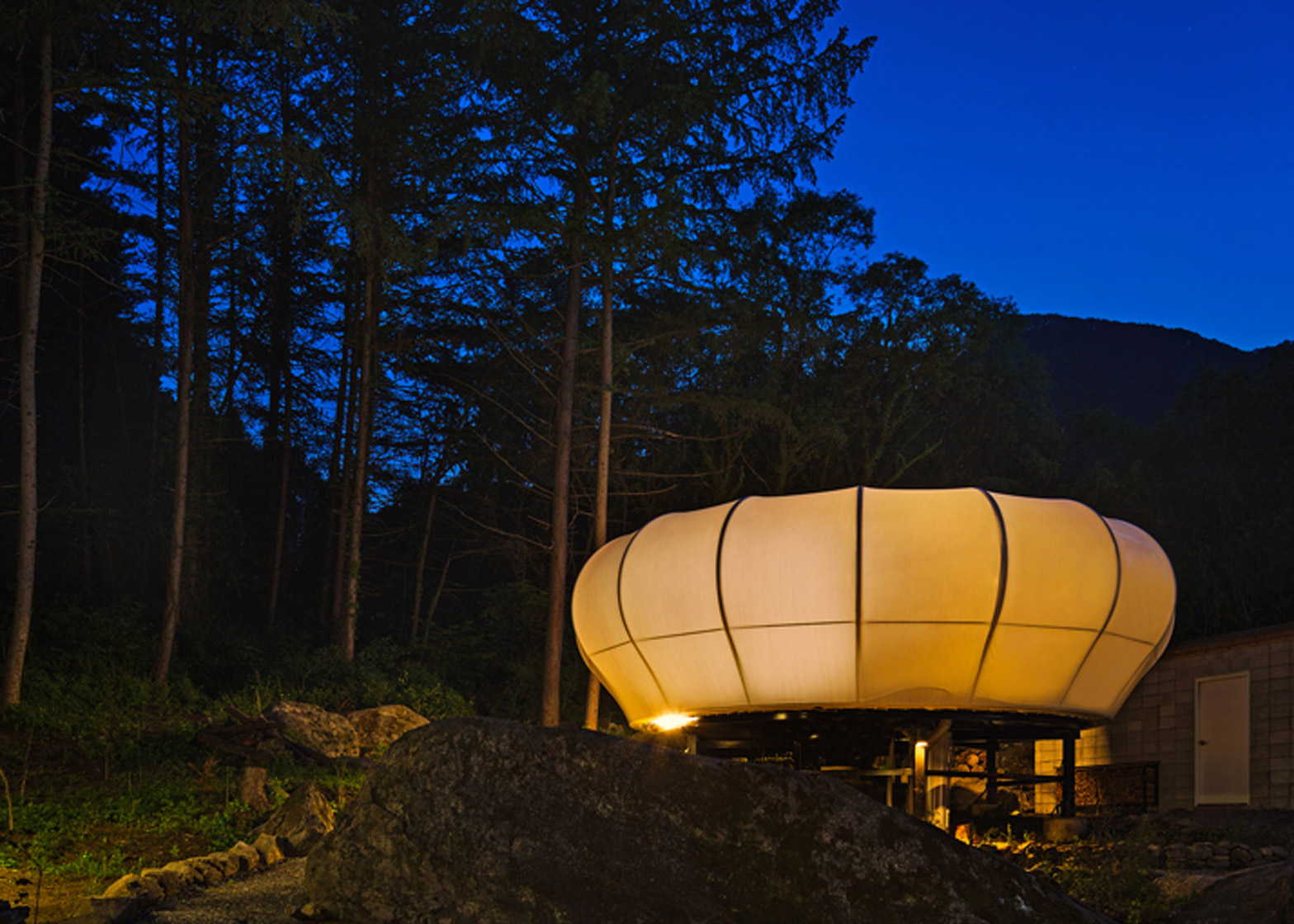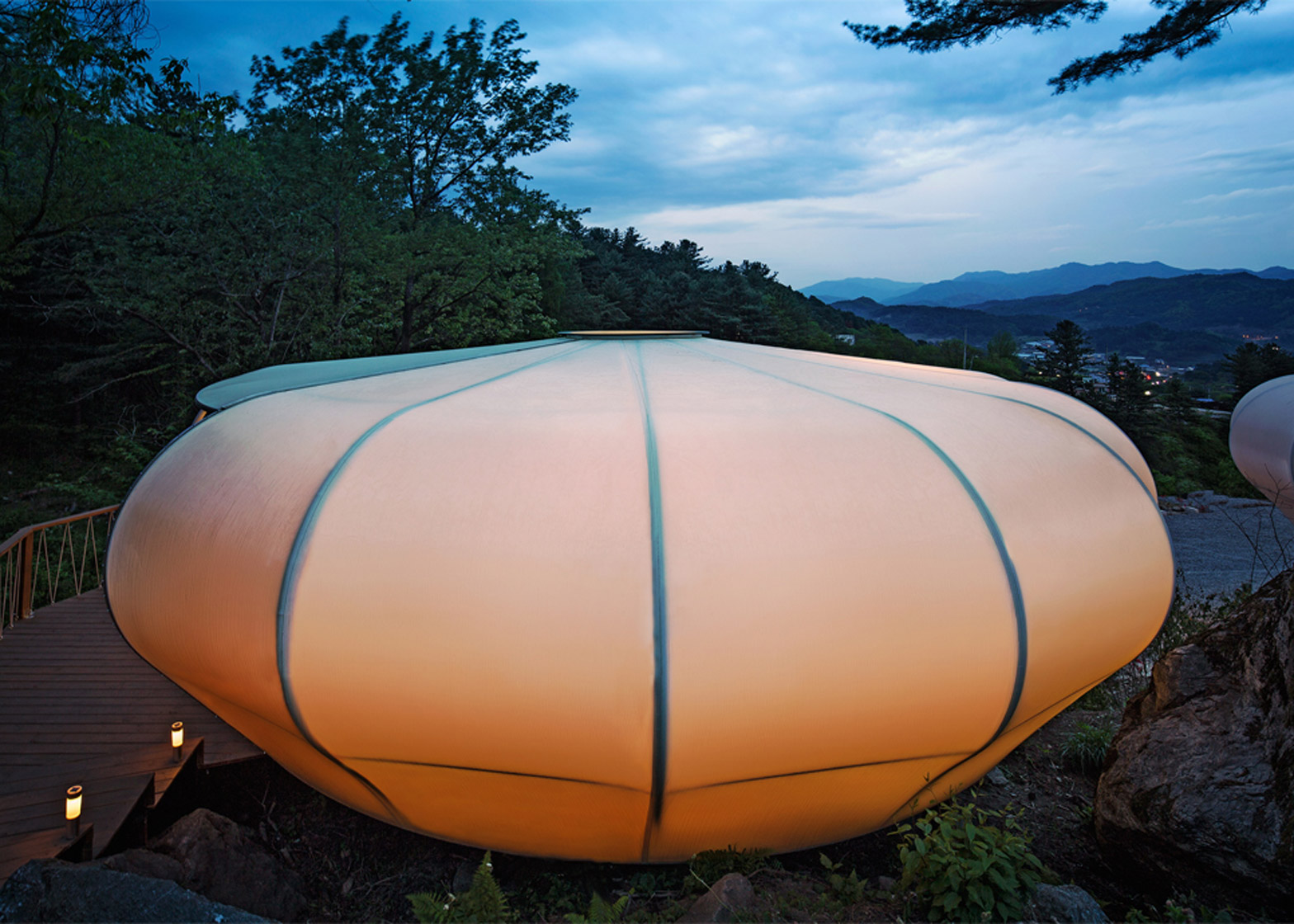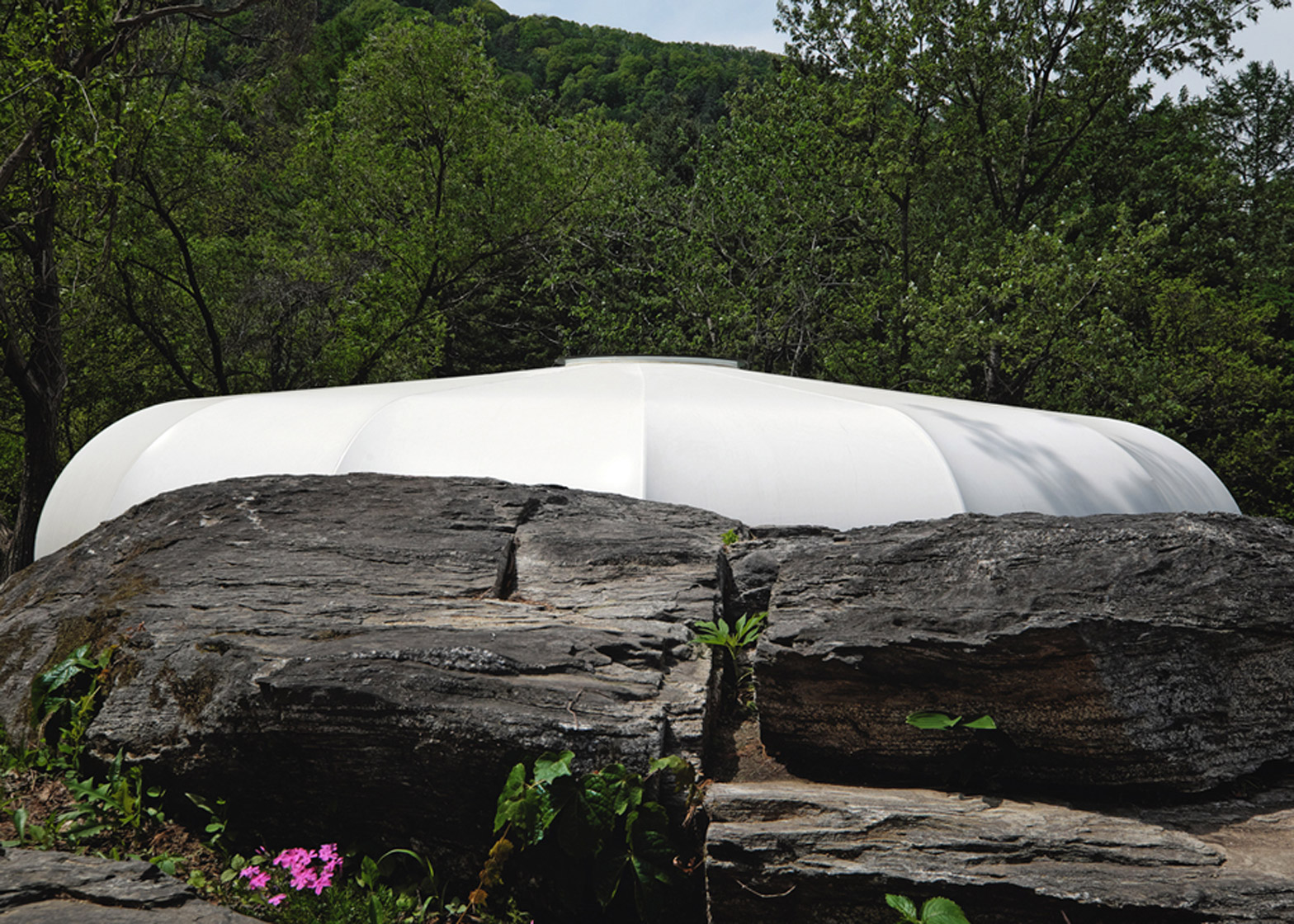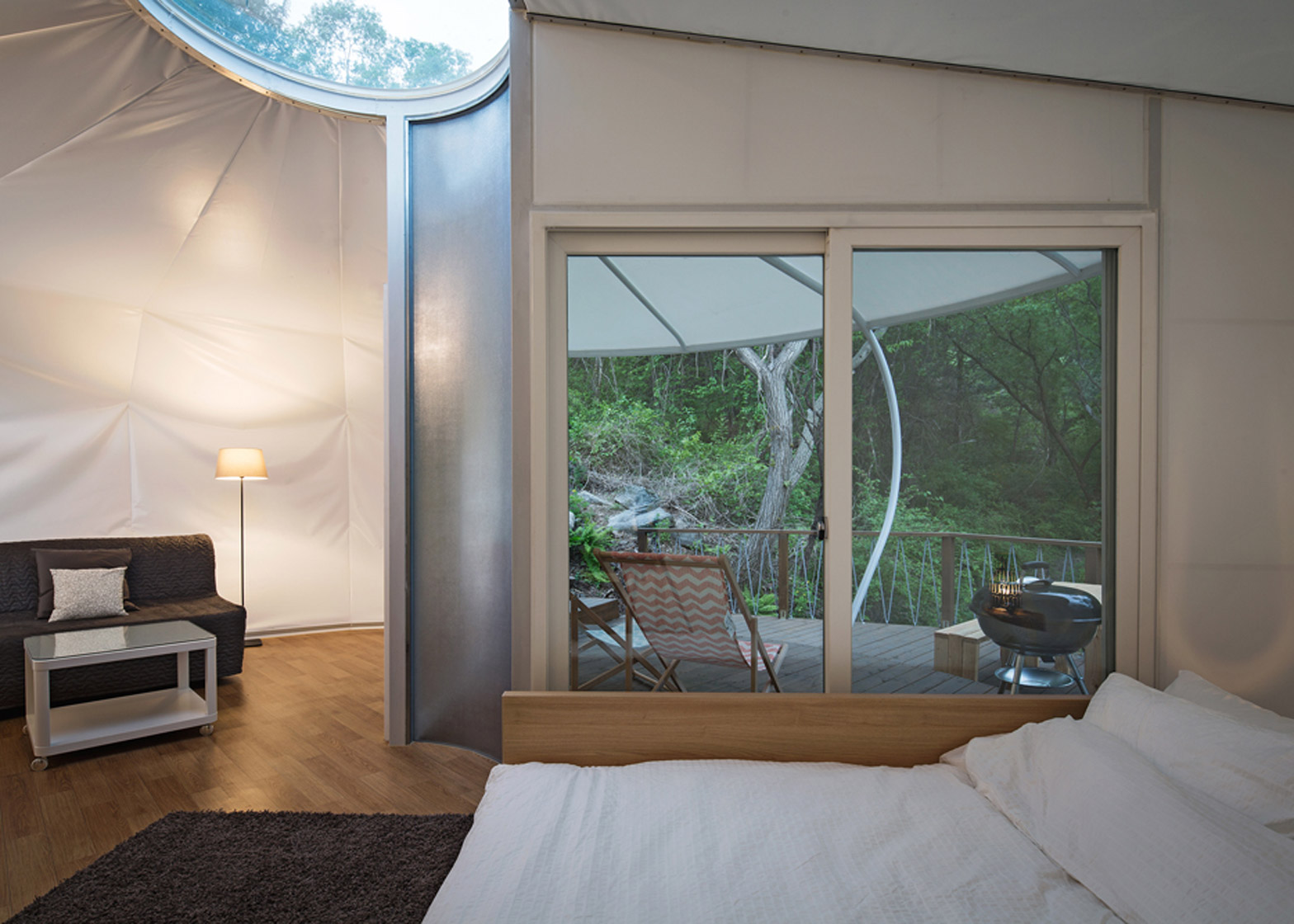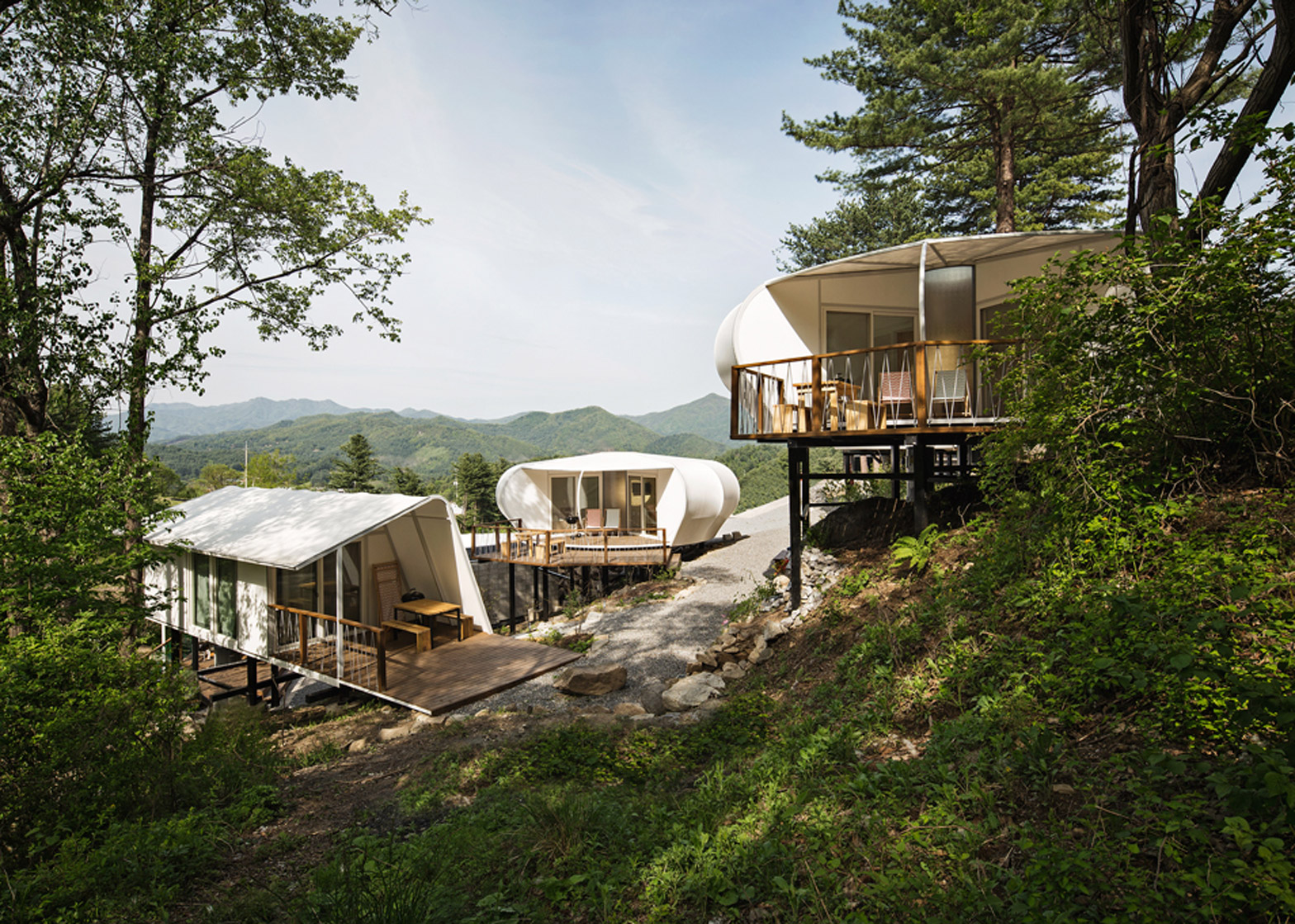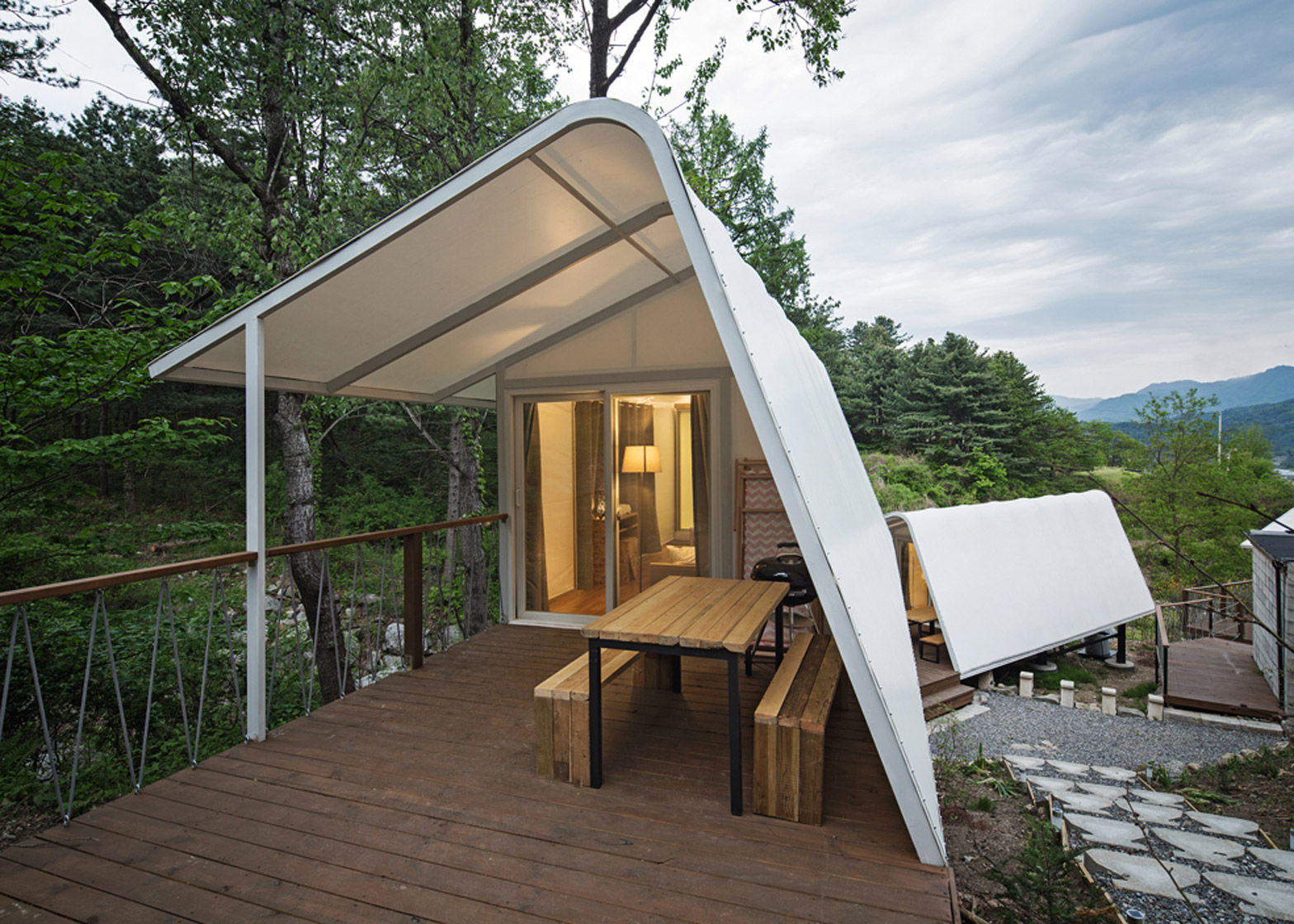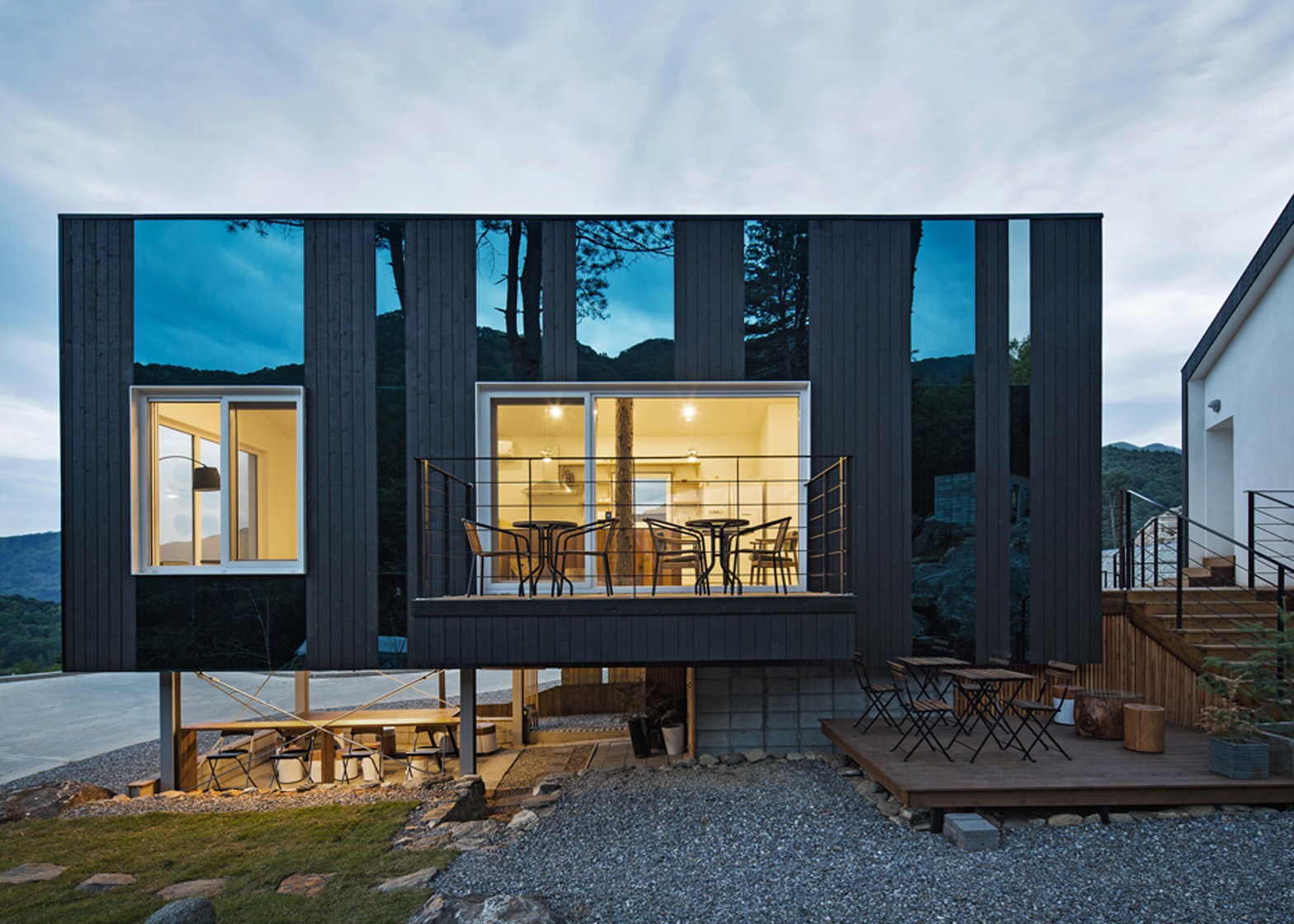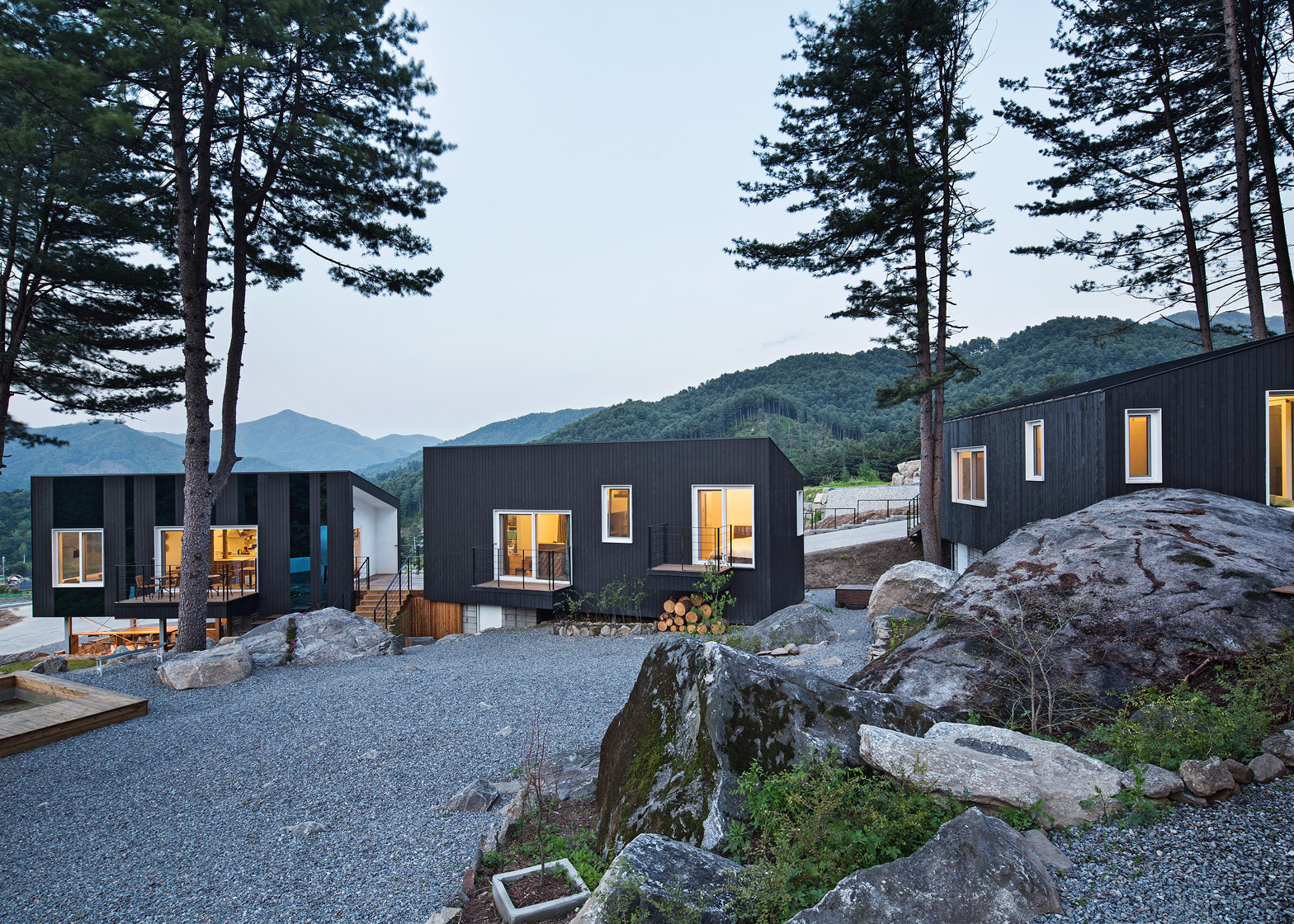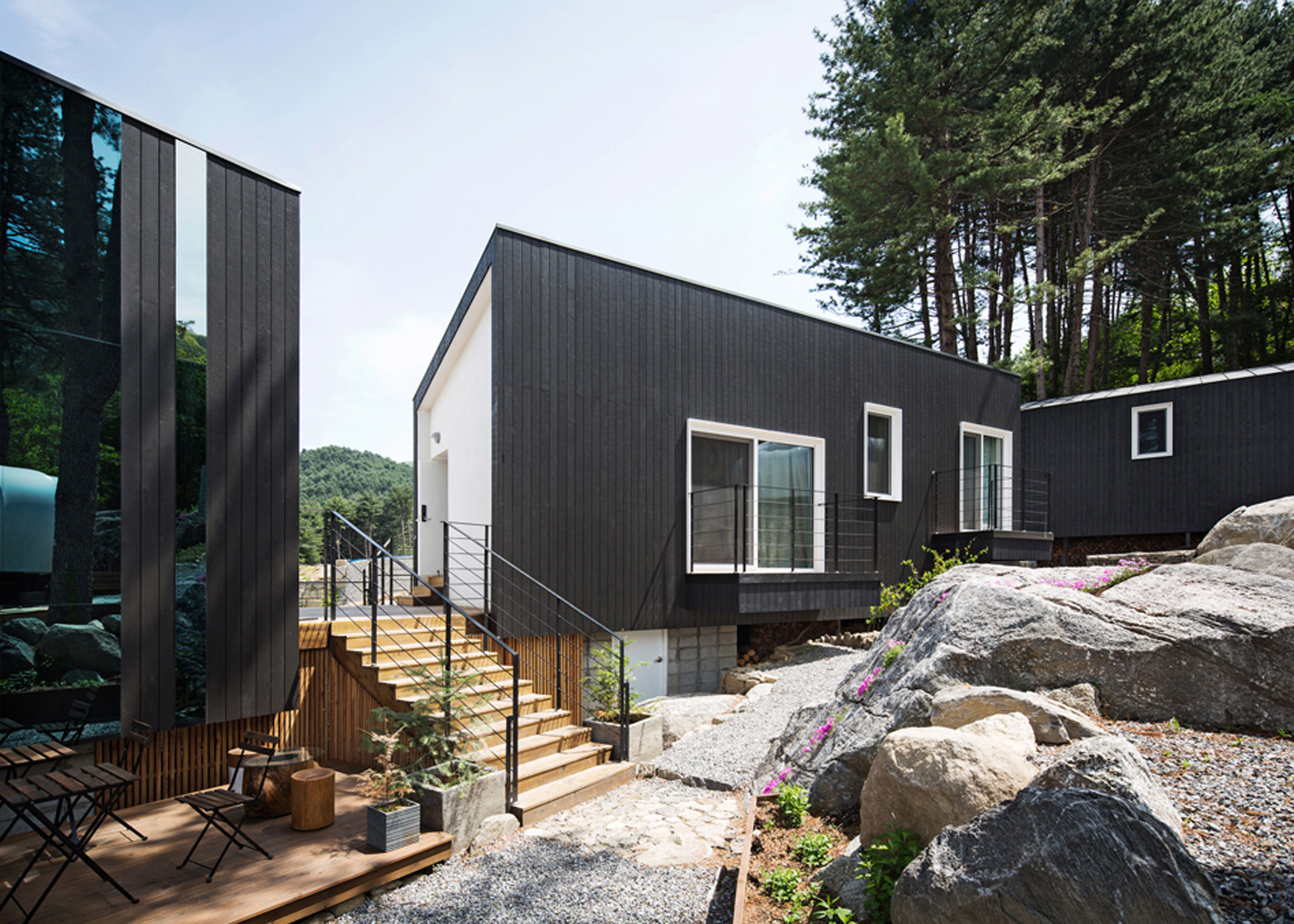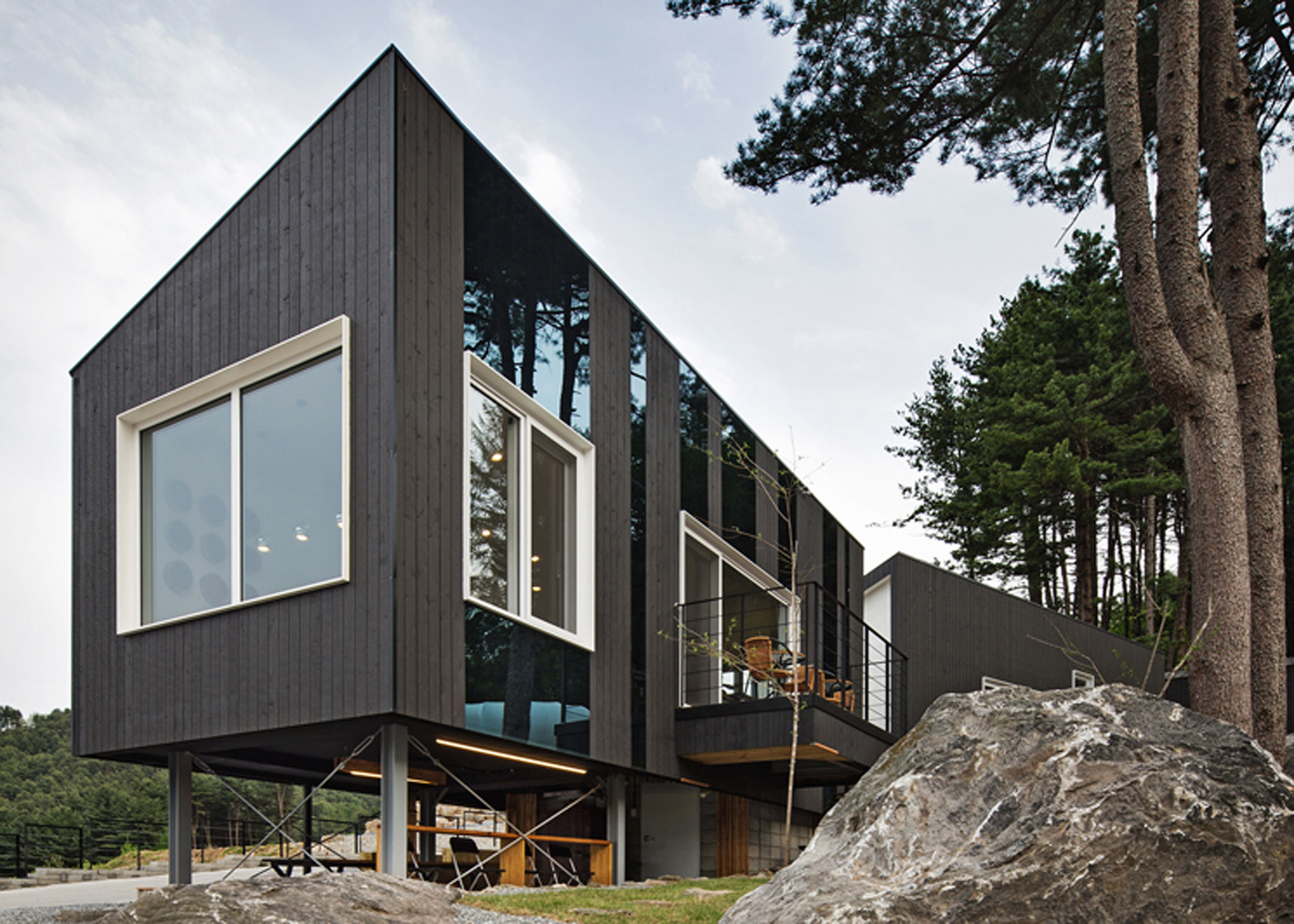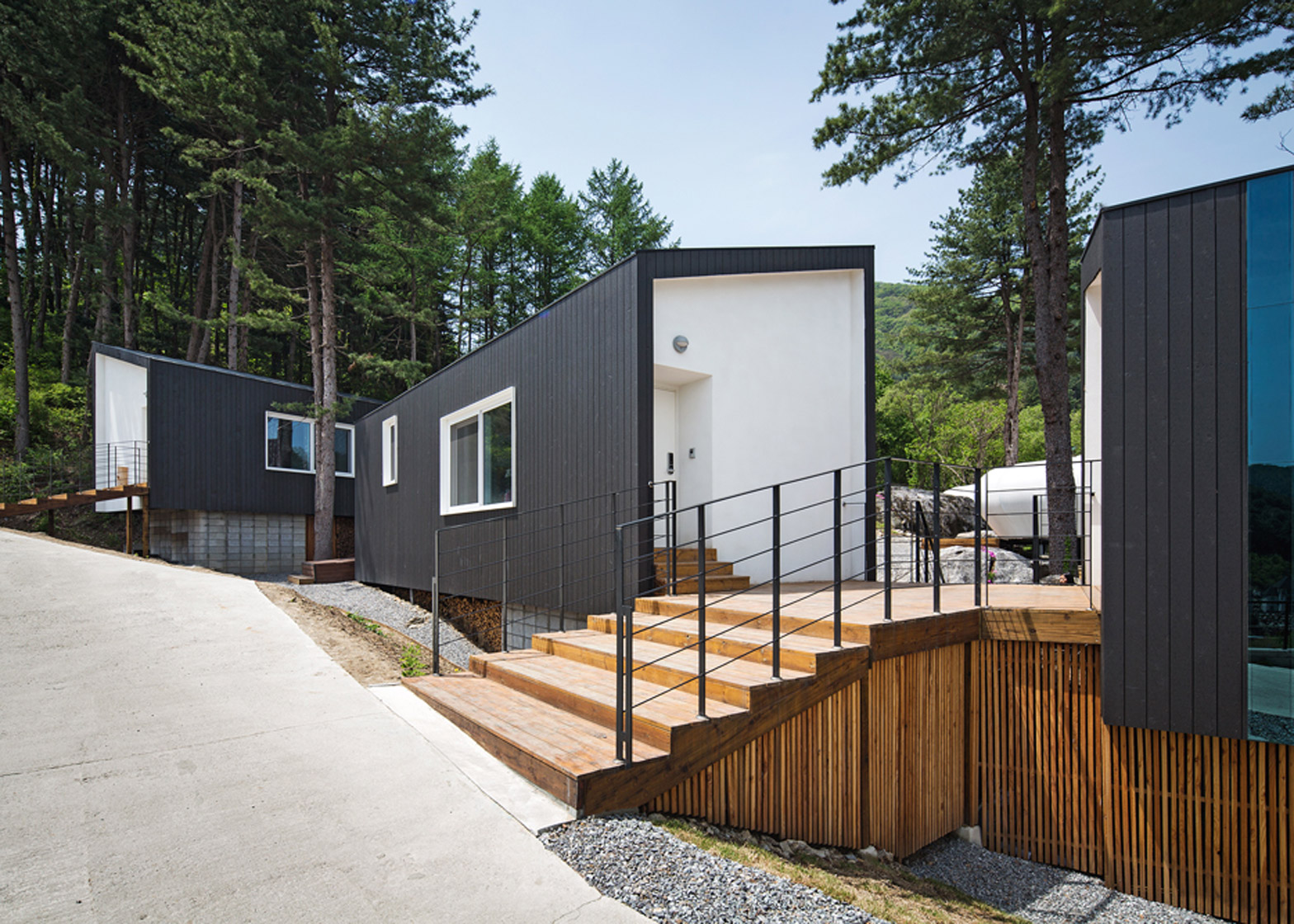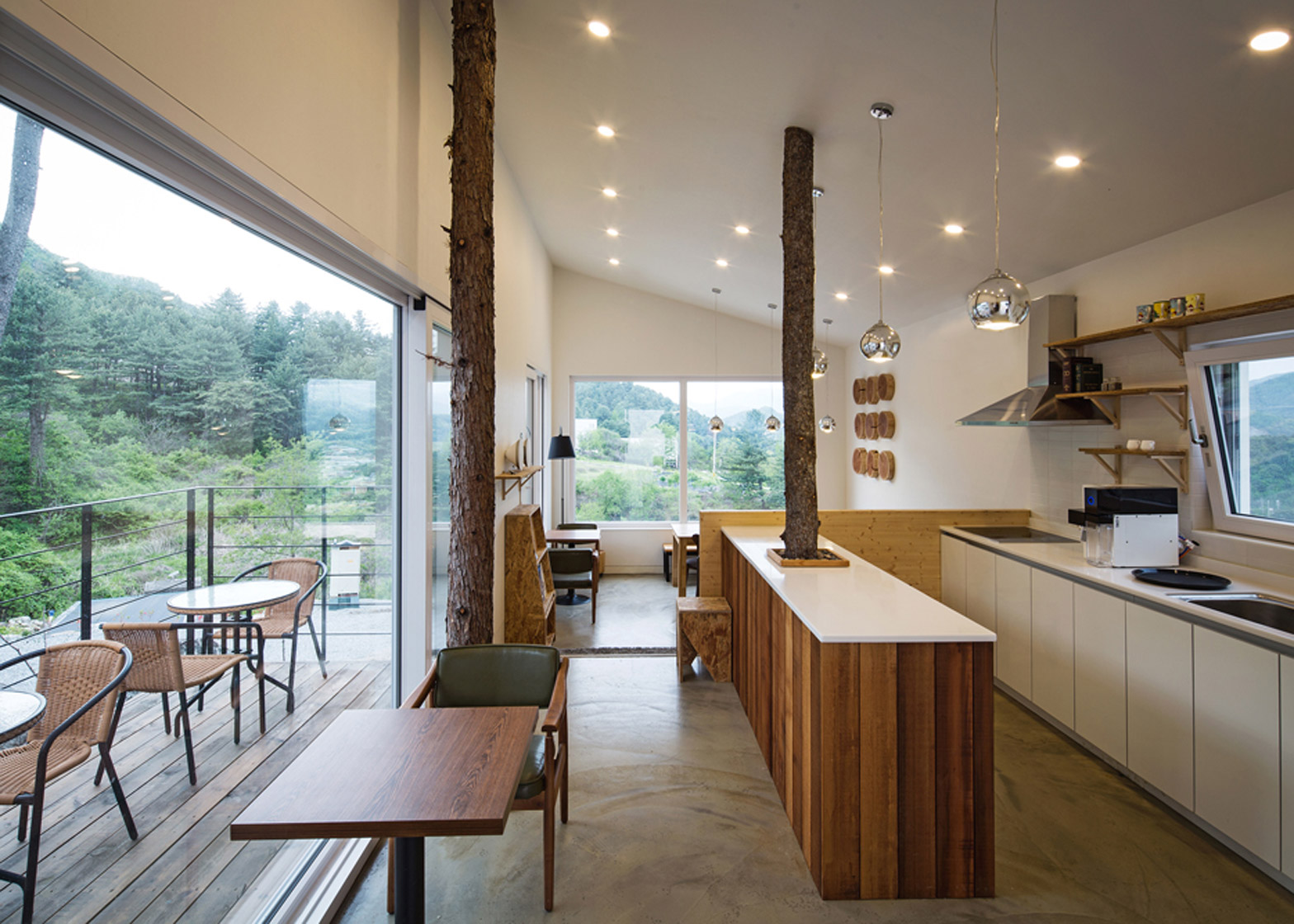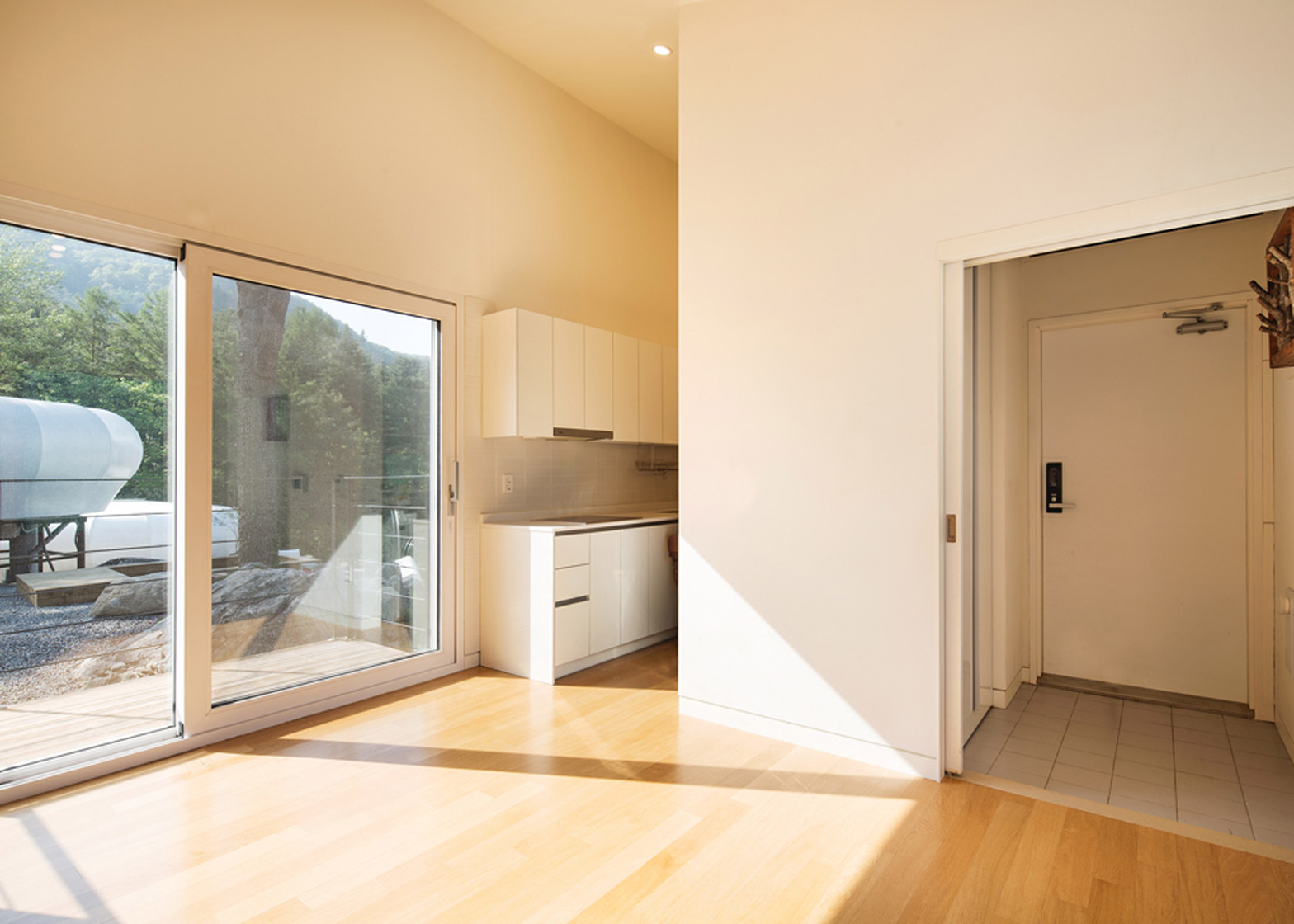Seoul studio ArchiWorkshop has completed a luxury camping facility near the South Korean capital, which comprises three wooden cabins and a cluster of membranous sleeping pods raised above the rocky terrain on stilts (+ slideshow).
The Glamping on the Rock camping ground is located on the outskirts of Seoul in the Gapyeong district, which is known for its arboretum, pine forests and mountainous landscape.
ArchiWorkshop was asked to develop a scheme for the campsite that retains and celebrates its natural characteristics, while providing modern amenities and comfortable accommodation for visitors seeking to escape from the city.
"We pursue to express the atmosphere of the site character on our masterplan," said a project statement from the studio, which previously designed tents shaped like worms and doughnuts for another campsite in Yang-Pyeong. "When people visit the site, they should experience the nature as itself and should not be disturbed by destructed nature."
The campsite is located on the edge of a pine forest, on a plot of land that slopes steeply over 25 metres from one end to the other. Three wooden structures that step down the hillside protect the camping area from an adjacent access road.
The lowest building accommodates a welcome centre, providing shared amenities including a kitchen and dining areas. The remaining two cabins are used for accommodation.
A large terrace for outdoor dining extends from one side of the welcome centre, which also features tree trunks inside the mono-pitched roof space to emphasise its connection with the forest.
The three wooden buildings are clad in black-painted cedar, with windows and recessed entrances marked out in a contrasting white finish. Mirrored panels set into the elevation of the welcome centre reflect the surrounding nature.
For the camping ground, the architects introduced two types of habitation units called the Rock Flower and Dynamic Triangle, which are both made from metal frames covered in a protective membrane.
The project's intention was to revitalise the concept of glamping – a kind of camping providing luxury facilities – which the architects feel has been devalued by poor-quality accommodation.
"The word 'glamping' was introduced over 10 years ago in Korea but its meaning was misappropriated in terms of quality and comfort," ArchiWorkshop claimed. "Instead of glamorous camping, low-quality tents were installed and profiteered."
"We came to a mind of creating glamping which gives people a chance to experience the nature even closer, while providing places to experience uniquely designed architecture and comforts: a place where nature, ecological values, comfort and modern design are equally balanced."
The Rock Flower units were influenced by flower buds that spring up between gaps in the rocks scattered across the site. The designs feature a framework of ribs that radiate like petals from a central point.
Circular windows at the apexes of the Rock Flower dwellings flood the interiors with natural light and provide views of the surrounding treetops. Each unit has a covered balcony that is directed towards the adjacent forest.
The Dynamic Triangle has an asymmetric pitched-roof canopy that wraps around the living area and extends over a decked outdoor dining space.
The translucent properties of the membranes that form the exterior surfaces of the glamping units cause them to glow like lanterns when illuminated from within at night.
Photography is by June-Young Lim.


